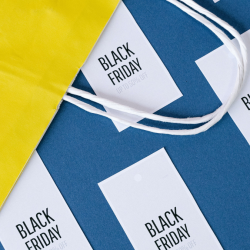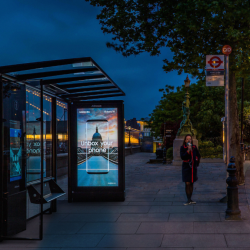The January sales frenzy creates an intensely competitive landscape for online brands, with numerous retailers offering discounts simultaneously across paid search and social. Breaking through the noise to reach potential customers may seem like a daunting task. However, fear not! We have compiled five strategic recommendations to leverage across paid search and social to stand out from the crowd and boost sales this January.
1. Cultivate trust in your business with user-generated content (UGC)
In today’s landscape, with low consumer confidence and rising scepticism toward businesses, consumers dedicate more time to the research phase before making purchasing decisions. This shift has resulted in a notable lack of trust in traditional advertising, prompting consumers to rely heavily on reviews from real people rather than brands or influencers. Nielsen’s Consumer Trust Index shows that 92% of customers trust user-generated content (UGC) more than traditional advertising, and 90% of 1,000 surveyed shoppers decide to purchase due to the influence of online UGC.
Recognising this trend, brands should tap into the power of UGC in the lead-up to the January sales period, as a trust-building strategy to drive consideration of their brand and products.
2. Leverage dynamic features to create personalised experiences to encourage sales.
Utilising dynamic product ads (DPAs) on paid social creates a hyper-targeted shopper experience, delivering personalised product recommendations from your shopping feed, tailored to each individual user based on their browsing history and interactions on your website. Dynamic keyword insertion (DKI) and ad customisers are Google’s answer to DPAs, but for text ads. DKI inserts the user’s search query into the ad text for personalised copy, while ad customisers dynamically insert information like countdowns or promotions, instilling a sense of urgency.
This dynamic trio not only enhances the personalised ad experience but also introduces a touch of urgency to prompt immediate action.
3. Adjust bidding strategies to optimise for profit
Consider transitioning to a Profit on Ad Spend (POAS) bidding strategy as you prepare for the January sales. This strategic shift from focusing solely on maximising revenue to optimising for profit entails calculating the profitability of each product, factoring in production costs, shipping fees, media spend etc. This data can be seamlessly integrated into the ad platforms, coupled with automated bidding, guiding the algorithm to prioritise investment in high-profit products. This method not only boosts revenue but also optimises the efficiency of budget allocation.
4. Make smarter budgeting decisions with attribution
Understanding how your campaigns are assisting in the path to conversion, beyond the last click, is crucial for budget allocation. Ahead of the January sales, consumers usually engage in pre-sale research on Google using general keywords. When the sales kick in, they frequently revisit the same website, this time using a different keyword — often the business name followed by the specific product they’re looking to purchase. Without an attribution model, if a consumer converts after the second website visit within the allotted look back window, the initial generic keywords won’t receive credit for the conversion, despite playing a substantial role in the conversion path.
This leaves brands unable to fully grasp the true value of these keywords, potentially leading to reduced investment in these areas over keywords that seem to deliver last-click revenue.
5. Finally, it’s still important to manually monitor and adjust campaigns during January sales
Although much of what we do nowadays is automated by machine learning, keeping a close eye on your campaign performance and being prepared to adjust targets and caps in response to emerging trends, competitor activities, or shifts in customer behaviour is crucial. Amidst substantial demand spikes during this period, neglecting these manual checks might result in the early depletion of campaign budgets, providing your competitors with the opportunity to capitalise on your lost impression share.
Featured image: Towfiqu barbhuiya / Unsplash






























